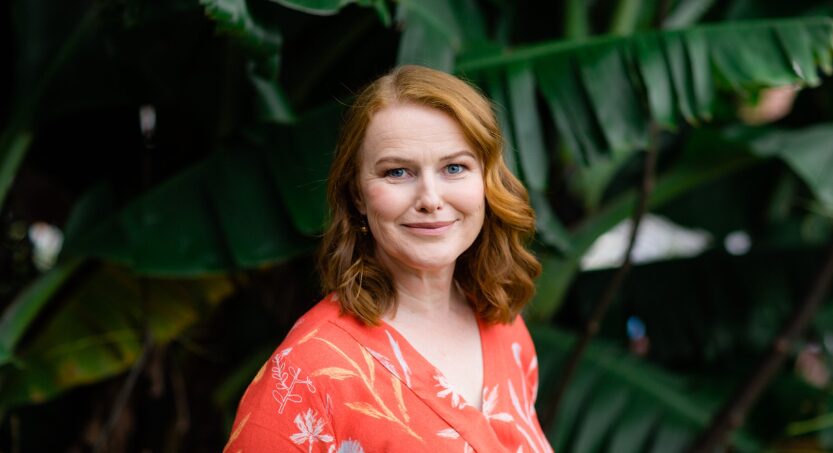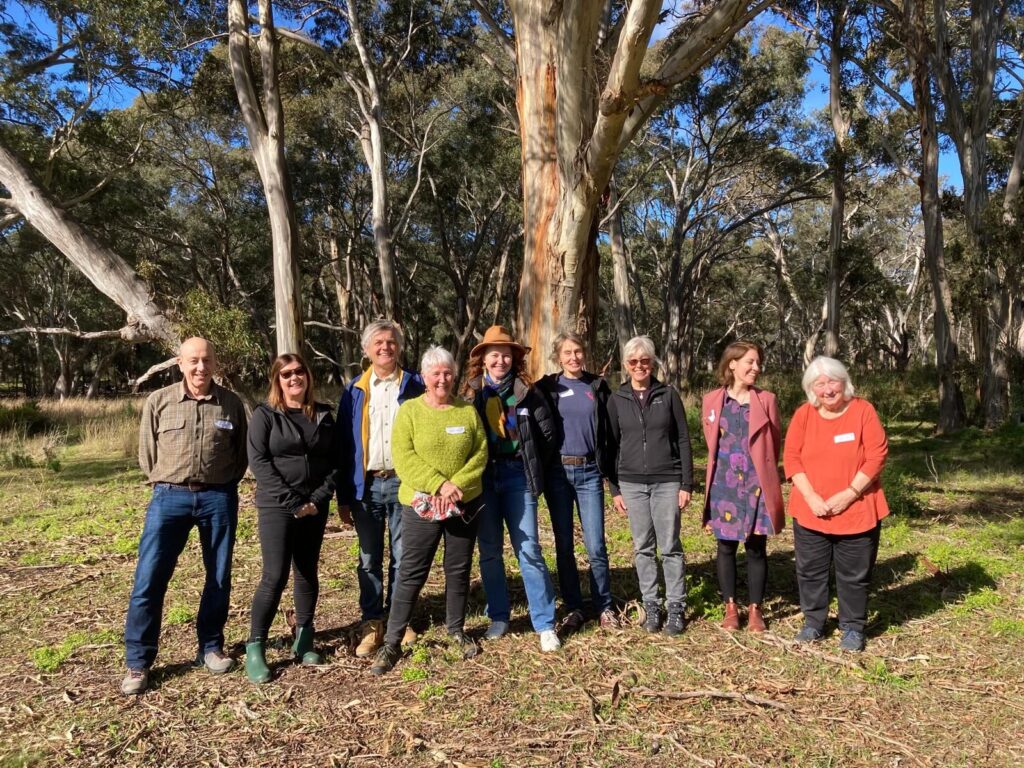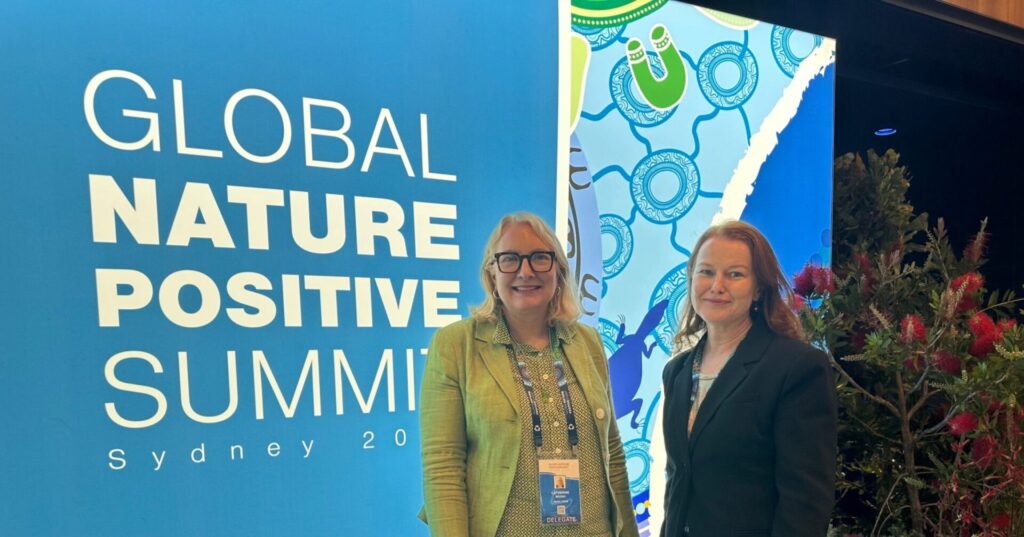Claire O’Rourke, AEGN CEO, on climate action: ‘We must fundamentally reorientate ourselves to meet this moment in history’

Where next on climate funding for philanthropy as we reach the mid-way point in the critical decade for action to prevent catastrophic environmental change? Claire O’Rourke stepped into the role of CEO of the Australian Environmental Grantmakers Network (AEGN) last year. Here, she talks about her vision for the organisation, the energising response of the sector and our role as pivotal ancestors-to-be at this vital juncture.
1. What are your reflections on the first six months in your role as CEO of AEGN and what’s your vision for the organisation?
These first six months have been deeply inspiring. Our members are focused, motivated and passionate about the change they want to see in the world. They won’t shout it from the rooftops, but I can tell you what they are achieving, individually and collectively, is astounding – every day I’m feeling more hopeful about our common future. What strikes me most is the untapped potential of environmental philanthropy in Australia. Climate causes receive just 2% of global philanthropic giving, while Australian PAF and PuAF giving to environment is around 4%. Funding for First Nations-led initiatives is 0.5%. Given the existential nature of the multiple climate and biodiversity crises and the leadership we need to turn things around, this seems like a massive challenge, but I see it as an enormous opportunity.
My vision for AEGN is a bold one, but it’s what is required: we must fundamentally reorient our approach to meet this moment in history. This means not just growing environmental giving, but ensuring it’s strategic, impact-focused, collaborative and guided by both First Nations wisdom and Western scientific knowledge. I see AEGN’s role as a catalyst of people and organisations across the public, private, community and philanthropic sectors, so we can create outsized collective impact and give our future generations a thriving world.
I see AEGN as a driving force for our interconnected planetary challenges, ensuring our children inherit a clean and regenerative land they’re proud to call home. This isn’t just aspirational – it’s essential for our survival and our social and economic progress.

2. We’ve just had the hottest January on record. How is the philanthropic community responding to the escalating climate crisis and what else would you like to see happen?
There has never been a better time in history to achieve impact for climate and nature than right now. We’re reaching the half-way point of the critical decade for action to prevent catastrophic climate change. In responding to this, it is energising to see philanthropists unite and commit to spending down their endowments by 2030, recognising that as ancestors-to-be, we live in a time like no other. We have also seen a rise in co-funding highly targeted and strategic initiatives, such as via the AEGN’s popular Project Clearinghouse portal. In addition, members are gathering around the potential of Australia, with Pacific Island nations, holding the Presidency of COP31 – the United Nations’ annual climate talks. If this event arrives on our shores, philanthropy will play a critical role in ensuring the moment is truly transformative.
A surge in trust-based, untied funding for environmental NGOs is what I would like to see further embraced by philanthropy to meet the urgency this moment requires.
3. AEGN and Philanthropy Australia are running another set of Climate Lens Community of Practice cohorts this year. The first kicks off in March around the time of International Women’s Day and will be focused on women and youth. Can you explain how the Climate Lens CoP works and why the focus on women and youth is important?
The Climate Lens CoP is a series of online sessions designed to assist the philanthropic community in applying a climate lens to their giving. Participants delve into how climate change exacerbates existing inequalities and explore strategic funding approaches to support more equitable and impactful solutions.
Focusing on women and youth is crucial because these groups disproportionately bear the brunt of the impacts of climate change, which are becoming more frequent and more intense. Women are more likely to experience economic hardship, displacement and increased vulnerability during climate-related disasters.
Similarly, young people face heightened risks to their physical and mental health, with many reporting significant anxiety about their futures due to the climate crisis. By applying a climate lens to broader giving, philanthropy can accelerate climate solutions that benefit both people and the planet.

4. At Philanthropy Australia’s national conference last year, Danny Kennedy made a call to action to philanthropy to use its power of catalytic capital to turbocharge renewable start-ups. Do you agree this is an area that should be developed? How can the sector be mobilised and what are the barriers and opportunities?
Danny is a good friend of mine, his call for philanthropy to back renewable start-ups shows us how powerful philanthropy can be in addressing the climate crisis through creative, passionate entrepreneurs. Philanthropy is uniquely positioned to de-risk new ventures with seed funding or other finance.
However, barriers do persist. Most start-ups are for-profit entities that don’t qualify for Deductible Gift Recipient (DGR) status, and most traditional grant structures aren’t designed for equity investments or loans. Plus, due diligence for start-up investments requires specialised knowledge. AEGN members have overcome these barriers through being connected with experts, or by learning from their peers in a supportive, generous and skilled community, whose members are continuously learning and finding success in leveraging resources.
5. What is lesser known about climate action and nature conservation?
What we are seeing increasingly emerge in scientific data, and at the recent World Economic Forum in Davos, Switzerland, is a greater understanding of how climate and nature are interconnected with all sectors and aspects of life. Extreme weather, pollution, the destruction of species: all of these are impacting our food supply, tourism, jobs, mental and physical health (particularly for children, the elderly and those facing disadvantage), human rights and inequality, disability, homelessness and poverty.
AEGN members see the big picture: funding to enable solutions to our planetary challenges will deliver substantial and tangible co-benefits, building a better future where people and nature thrive together. However, as Project Drawdown’s Executive Director says: “For every year we wait to act, it’s 7% to 8% compounded progress lost.”
AEGN is Australia’s peak membership organisation for environmental and climate philanthropy. Its 200+ members are trusts, foundations and individual donors who are united by their vision for a future where our climate is stable, and people and nature thrive.
Register for the The Climate Lens Community of Practice online sessions on Philanthropy Australia’s website.